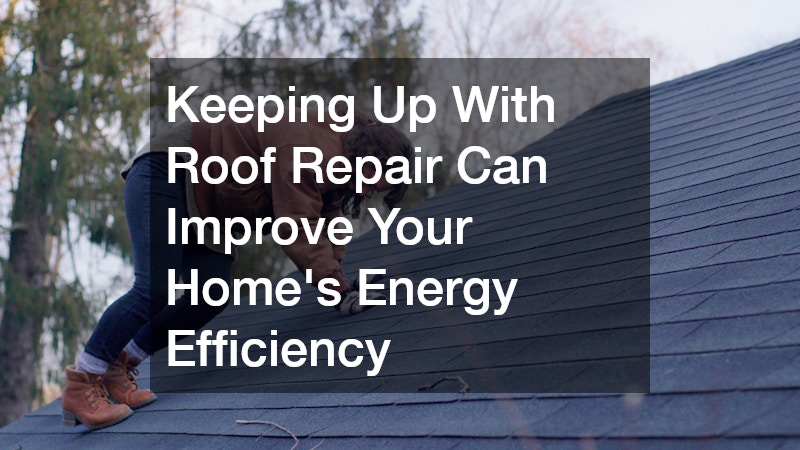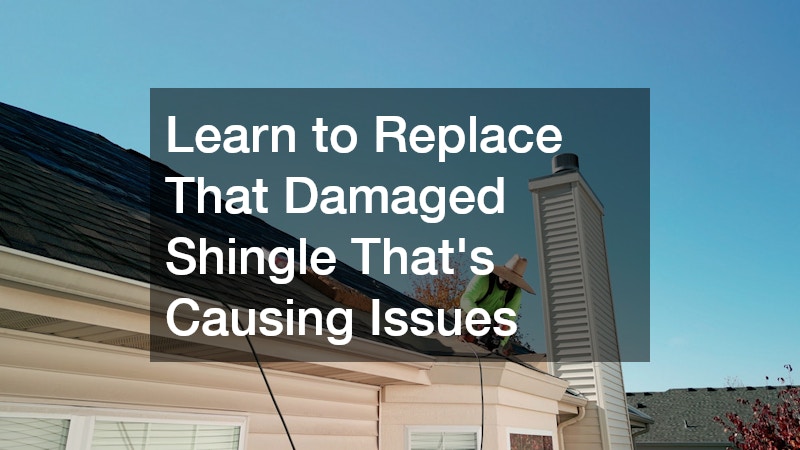Roof repair is an essential aspect of home maintenance that often gets overlooked. Homeowners usually pay attention to their roofs only after significant damage has occurred. Regular inspections can help identify minor issues such as damaged shingles before they escalate into major problems.
Shingles play a crucial role in protecting your home from the elements, and a single damaged shingle can compromise your roof’s integrity. Therefore, it’s essential to understand why timely roof repair is necessary not just for aesthetic reasons, but for the overall health of your home.
Replacing damaged shingles promptly can save you from future headaches and expenses. A damaged shingle can lead to leaks, which might cause water damage to the interior of your home. The cost of repairing water damage can be significantly higher than simply replacing a shingle. Additionally, roof repair can prevent the growth of mold and mildew, which thrive in damp conditions and can pose health risks. By ensuring that your roof is always in top condition, you maintain the value of your property while ensuring the safety and comfort of its occupants.
Moreover, keeping up with roof repair can improve your home’s energy efficiency. Damaged shingles can result in poor insulation, leading to higher heating and cooling costs. By repairing or replacing shingles as needed, you can bolster your home’s insulation capabilities. This will not only cut down on energy bills but also promote a more sustainable lifestyle by reducing energy consumption. In essence, regular roof maintenance is a critical part of home upkeep that delivers both immediate and long-term benefits.
Identifying Damaged Shingles
Knowing how to identify damaged shingles is the first step towards effective roof repair. A visual inspection from the ground using binoculars can reveal several signs of damage. Look for curling, cracks, or missing granules on the shingles. Dark patches can indicate a loss of granules, while algae growth may be seen as black streaks. Also, check for loose or missing shingles, which indicate a need for immediate attention.
If water stains appear on your ceiling or walls, it might suggest a roof leak due to damaged shingles. Another indicator could be inexplicably high energy bills, which might result from compromised insulation because of shingle damage. Some homeowners may also notice sticky residue or asphalt in their gutters, which indicates shingle wear and tear. Regular inspections allow for early detection of these symptoms, thereby facilitating prompt repair. Timely identification and repair can significantly extend the lifespan of your roof.
Engaging professional roof inspections once a year can also be beneficial. Experts have the expertise to spot subtle signs of damage that may not be visible to the untrained eye. They use specialized tools and techniques to assess the condition of your shingles thoroughly. This preventive measure can pinpoint issues before they develop into extensive damage requiring costly repairs. Therefore, understanding what to look out for can help homeowners tackle roof repair proactively.
Steps to Replace a Damaged Shingle
Once you’ve identified a damaged shingle, the next step is to replace it. First, assemble the necessary tools like a pry bar, a hammer, roofing nails, and replacement shingles that match your existing roof. Begin by carefully loosening the adhesive under the damaged shingle using the pry bar. Be cautious not to damage the surrounding shingles during this process, as this could further complicate the roof repair.
After removing the damaged shingle, slide the new shingle into place, aligning it precisely with the existing shingles. Secure it with roofing nails, ensuring they are driven in straight and fully to prevent water penetration. Apply a small amount of roofing adhesive beneath each corner of the replacement shingle to secure it in place and prevent wind lift. Double-check to ensure that the replacement shingle lies flat and is well-sealed. This ensures the integrity of your roof and prevents future issues.
Finally, inspect your work once more to confirm that the replacement shingle is installed correctly. If there are any loose edges or bulges, adjust as necessary before the adhesive sets. It’s also advisable to check for any further damaged shingles in the surrounding area that might need attention. Concluding the repair with a thorough inspection can help guarantee a successful roof repair. If you find replacing shingles a daunting task, professional roofers are always available to ensure the job is done correctly.
Preventive Measures to Avoid Shingle Damage
While knowing how to replace a damaged shingle is valuable, prevention is the best approach to minimize roof repair needs. Regular maintenance, such as clearing debris and ensuring proper drainage, can significantly reduce the risk of shingle damage. Trim overhanging branches to prevent them from scraping or falling onto your roof. Trees close to your home can also harbor pests that might contribute to roof deterioration.
Weatherproofing measures, such as applying a sealant, can protect shingles from extreme weather conditions. Additionally, installing a quality gutter system can prevent water accumulation and subsequent shingle degradation. These preventive steps not only protect your roof but also enhance the longevity of your shingles. By investing in precautionary measures, you can avoid the hassle and costs associated with frequent roof repairs.
Finally, never neglect periodic inspections, especially after severe weather conditions. Checking your roof after a storm can help identify any new damage and enable prompt action. Developing a routine of regular inspections and minor repairs will create a robust defense against shingle damage. In essence, combining periodic checks with preventive care fosters a resilient roofing system. This proactive approach ensures your home remains shielded from the elements, maintaining its integrity and your peace of mind.




